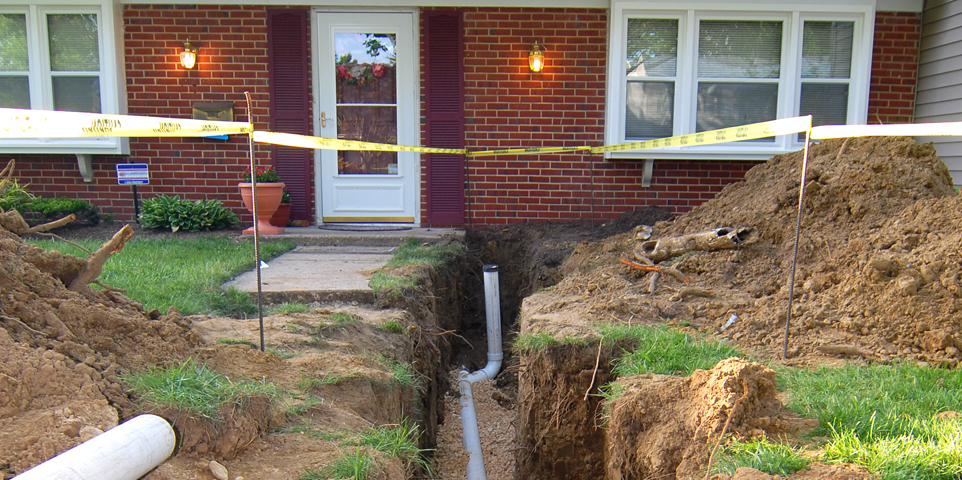Fact: Over 14% of U.S. sewer backups occur in multi unit buildings, causing widespread tenant disruption and health hazards.
Sewer backups are more than gross—they threaten health, damage interiors, and lead to costly repairs. In multi unit properties, a single clog can cascade through shared pipes, triggering messy sewage removal & cleanup, spreading foul odors, and risking cross-contamination. Property managers must adopt a proactive strategy to prevent backups before they flood corridors and units. Here’s your comprehensive, people-first guide.
1. Understand Common Causes
Sewer lines clog under pressure from grease buildup, tree root intrusion, or foreign objects flushed down toilets. A hair or wipe can start a clogged drain overflow, but in a multi unit stack, minor clogs can quickly turn into a full toilet overflow cleanup or even a more serious bathroom sink overflow or kitchen sink overflow event when water has nowhere to go.
2. Schedule Regular Inspections
Quarterly camera inspections of main stacks and lateral lines catch root intrusion and early grease deposits. Identifying a small root cluster heading toward your main lateral helps avoid a catastrophic flood damage cleanup scenario across multiple units. Early detection lets you call for pipe leak cleanup service or a minor burst pipe damage cleanup before tenants suffer.
3. Implement Grease Control Programs
For properties with communal kitchens—such as apartments with shared laundry or cooking areas—install grease traps and educate residents on never pouring fats, oils, or coffee grounds down drains. Proper disposal cuts down on surefire blockages that lead to widespread plumbing overflow cleanup calls and expensive water damage restoration projects.
4. Use Backflow Prevention Devices
A backflow valve on each vertical stack or at the sewer main prevents city sewer pressure from reversing into lower units during heavy rain or system surges. This simple device stops floodwater from pushing raw sewage up through toilets and showers—saving you from a multiunit storm and wind damage cleanup nightmare.
5. Clear Secondary Drains and Overflows
Many backup issues begin when secondary lines—like HVAC condensate drains—clog and overflow. Include checks of the hvac discharge line repair area in your maintenance plan. Clearing algae and debris ensures condensate flows away, preventing moisture from softening walls and inviting a larger water extraction & removal effort later.
6. Train Staff on Early Warning Signs
Maintenance teams should know to look for gurgling noises in drains, slow sinks, or wet spots near cleanouts. A persistent slow drain often signals a developing broken water pipe repair need or a deeper clog. Swift action—snaking, hydro jetting, or root cutting—stops a minor drip from escalating into a full-scale water damage cleanup call.
7. Educate Tenants on Proper Use
Provide clear, concise guides on what not to flush or pour down drains: wipes, feminine products, grease, and trash. Post friendly reminder notices near toilets and sinks. When tenants understand the risks, they help prevent shower & tub overflow and unnecessary calls for appliance leak cleanup teams.
8. Coordinate with Local Utilities
Work with municipal sewer departments to learn about peak-flow warnings and scheduled maintenance. During San Antonio’s heavy storms or snowmelt in other regions, timely communication prevents your building’s lines from being overwhelmed—avoiding back-ups that would otherwise require urgent emergency water damage restoration.
9. Upgrade Aging Pipes
Cast-iron and clay pipes corrode and crack over time. Plan capital projects to replace old mains with modern PEX or PVC lines that resist root intrusion and corrosion. A proactive plumbing upgrade avoids repeated water line break or main water line break crises and reduces long-term structural restoration liabilities.
10. Implement a Rapid Response Plan
Despite best prevention, backups may occur. Your after-hours plan should include:
- Emergency shut-off valves or plugs at cleanout points to contain backups.
- A vetted list of 24/7 restoration experts for sewage removal & cleanup, burst pipe damage cleanup, and fire damage cleanup if electrical faults occur.
- Clear tenant communication templates to manage expectations and ensure safety.
Preventing sewer backups in multi unit buildings requires a blend of inspections, tenant education, smart upgrades, and emergency planning. By tackling grease, roots, and aging pipes before they become disasters, you minimize tenant disruptions, avoid widespread water damage restoration, and keep your property healthy and functional—no matter how heavy the rains or how old the infrastructure.


